Sun, don't fail me now
Oct 8, 2009
Portland photographer Corey Templeton took this picture last summer. He says the staircase is somewhere in the West End.
Oct 8, 2009
Portland photographer Corey Templeton took this picture last summer. He says the staircase is somewhere in the West End.
Oct 15, 2009
This is Stockholm after midnight last June, during one of the white nights near the summer solstice. The tower in the foreground is part of the Old Town, which dates back to the thirteenth century. The cranes in the background are building the part of town that will date back to the twenty-first century.
Nov 19, 2009
About twelve summers ago, we made it to Idaho Peak, above New Denver, British Columbia, in the Selkirk Mountains. That meadowful of flowers up there is as good as it gets for flowers.
The trail isn't as sketchy as it might look; it meanders gently around the bend up ahead toward a fire tower that overlooks Slocan Lake and the tiny lakeside towns of Silverton and New Denver. All the settlements in this neck of the woods were late-nineteenth-century mining towns; when the silver and gold gave out in the early to middle years of the twentieth century, the towns struggled, and some vanished. A revival began in the 1960s with U.S. draft dodgers and Canadian and U.S. back-to-the-landers, who were attracted by the scenery and the lack of twentieth-century sprawl.
Best thing about the flowers on Idaho Peak: it's always summer up there. The flowers are always in full bloom. I can't remember it any other way.
Dec 3, 2009
Dutch photographer Leo Koolhaven took this shot at the train station in Odessa.
Jul 14, 2010
During the godawful heat wave of July 1901, nobody in New York was in a good mood, and everybody was mad at the ice companies. The reason was that hot summer weather was associated with both increased demand for ice and reduced supply of well water with which to make ice at the big ice plants in Brooklyn and the Bronx. So the ice companies started using city water to supplement well water, and on the hottest days, they used so much municipal water that taps literally ran dry all over town. New Yorkers complained loudly to their elected officials, but the ice industry also had ways of "communicating" with politicians.
Giving away a little free ice--bring your own dishpan--was a public relations gesture on the part of the ice-makers. But note that a police presence was necessary at the ice lines.
The heat wave of July 1901, with temperatures near 100 degrees, killed thousands of people. The misery was compounded by the deaths of thousands of animals, including horses pulling ambulances and fire engines, who dropped dead in their traces while responding to emergencies. Sanitation crews fell far behind in removing carcasses from the streets. Anybody who could afford to get out of town got out of town.
Jul 16, 2010
There is a webcam at the North Pole. It's a security camera, basically, keeping an eye on all the scientific instruments that monitor weather, snow, and ice conditions at the Pole. The camera is solar powered, sensibly enough, so the picture-taking begins each year in April and continues into October. Today, polar weather is dry and sunny, perfect for snapshots, but I chose to post this image instead, from July 5, because of the hint of a rainbow in the sky.
The puddles are meltwater ponded on top of the sea ice; the Arctic Ocean itself is still completely ice-covered in this photo. Since 2002, when the first webcam recorded this phenomenon throughout the Arctic summer, meltponds have first appeared as early as mid-June and as late as August. Most years, the ponds have spread to cover most of the sea ice by mid-August, before freeze-up begins again in late August. But in 2008, for reasons unknown, only a few small ponds appeared, and they'd barely begun to spread at all when freeze-up started.
So far, melting in 2010 has followed a pattern typical of the average North Pole summer--at least average for recorded North Pole meltpond history, which dates back only to 2002.
The National Oceanic and Atmospheric Administration, which operates the webcam, has assembled the snapshots into videos, which are posted on Youtube. You can see the snapshots and access the videos from NOAA's Arctic Gallery website.
Apr 17, 2011
Leaning against the family's 1955 DeSoto after a summer-vacation day with the leaping dolphins at Marineland, the California boys at right and their cousins from Texas settle back to enjoy an ice cream cone. Except for little brother at far right, who's not enjoying the moment all that much; his ice cream rolled off the cone and plopped down at his feet in the parking lot. . . .
Nothing says the 1950s like jeans rolled up at the bottom and a big DeSoto in a big parking lot.
Jul 23, 2011
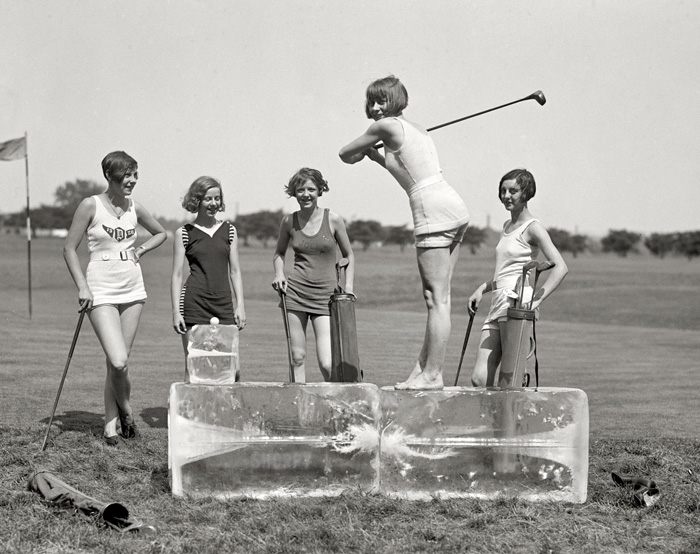 On July 11, 1926, the Washington Post published this publicity shot for "the Gladyse Wilbur girls," a song-and-dance troupe that did its singing and dancing, as well as its teeing off, in bathing costumes. That's Dorothy Kelly on ice, backed up by Virginia Hunter, Elaine Griggs, Hazel Brown, and Mary Kaminsky.
On July 11, 1926, the Washington Post published this publicity shot for "the Gladyse Wilbur girls," a song-and-dance troupe that did its singing and dancing, as well as its teeing off, in bathing costumes. That's Dorothy Kelly on ice, backed up by Virginia Hunter, Elaine Griggs, Hazel Brown, and Mary Kaminsky.
The show was in Keith's Theater in Washington, which may have been air conditioned by 1926. The ice in the photo is obviously intended to suggest that the Gladyse Wilbur girls can be enjoyed in cool comfort, even in the middle of the summer.
Jun 23, 2012
 This picture needs something to suggest the scale of what we're looking at in the University of Alaska botanical garden in Fairbanks. The person in the background isn't really close enough to the cabbage that's the center of attention here. But perhaps, if you know about those Alaska cabbages that top out at 50 or 100 pounds or suchlike, inspired by sunshine 24 hours a day, then you can freely imagine the scale and be appropriately impressed. (Hint: Think Little Shop of Horrors.)
This picture needs something to suggest the scale of what we're looking at in the University of Alaska botanical garden in Fairbanks. The person in the background isn't really close enough to the cabbage that's the center of attention here. But perhaps, if you know about those Alaska cabbages that top out at 50 or 100 pounds or suchlike, inspired by sunshine 24 hours a day, then you can freely imagine the scale and be appropriately impressed. (Hint: Think Little Shop of Horrors.)
Jul 5, 2012
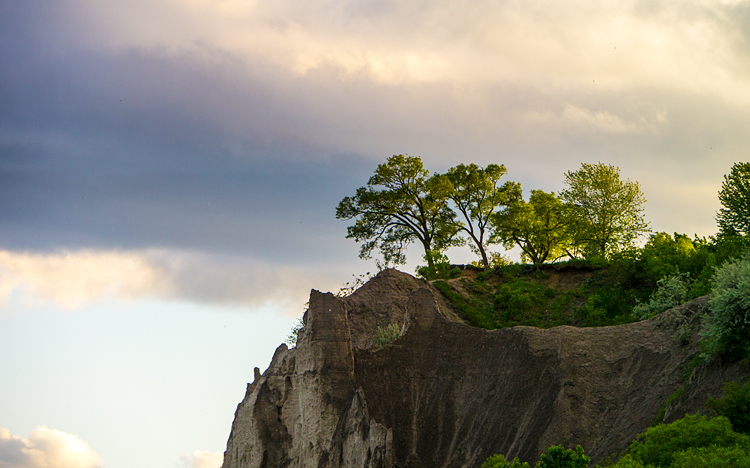 Scarborough Bluffs escarpment above Lake Ontario in Toronto.
Scarborough Bluffs escarpment above Lake Ontario in Toronto.
Aug 15, 2012

Jun 25, 2013
 Expecting more rain on Kater Street
Expecting more rain on Kater Street
Jul 7, 2013
 In my humble opinion, in my humble backyard, even the hibiscus is not completely happy with life when the mercury hits 94 and the heat index is over 100.
In my humble opinion, in my humble backyard, even the hibiscus is not completely happy with life when the mercury hits 94 and the heat index is over 100.
You'd think something tropical and well-watered that only had to hold it together for a single day could bloom right through the scorching. And you'd be almost right. These flowers are still beyond awesome, at least a 20 on a scale of 1 to 10. But the heat's in charge these days, not the petals.
Air conditioning is my friend.
Jul 11, 2013

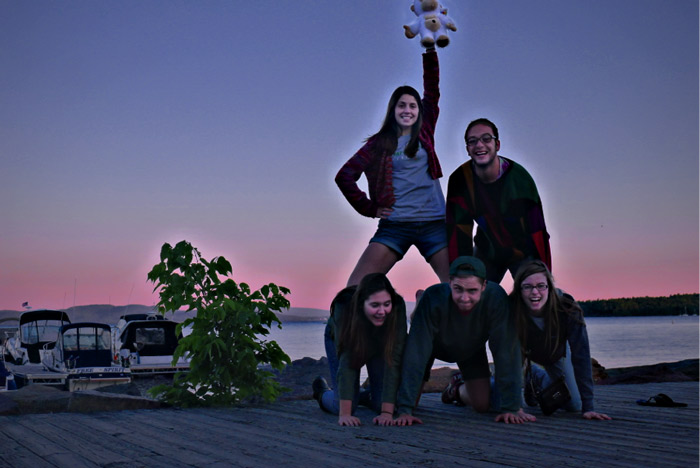
Jul 18, 2013
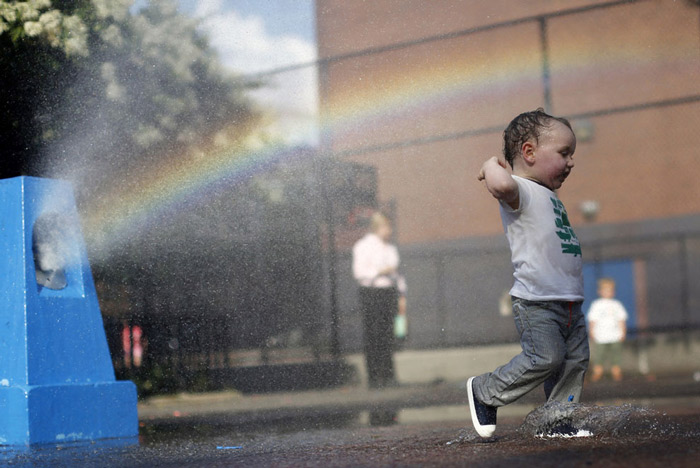 This week in Brooklyn. Could be Philly.
This week in Brooklyn. Could be Philly.
Jul 29, 2013
As leafy as the trees may be, when the summer sun takes aim at bricks and concrete, the light will find a way.
Jun 23, 2014
Jul 14, 2014
Jul 22, 2014
 In back of the parking garage at 1700 South Street is a block-long garden on Kater Street, where nobody picked the artichokes in the edible-bud stage. They're flowers now.
In back of the parking garage at 1700 South Street is a block-long garden on Kater Street, where nobody picked the artichokes in the edible-bud stage. They're flowers now.
Feb 18, 2016
 On the sidewalk. In the city. Last summer.
On the sidewalk. In the city. Last summer.
Mar 14, 2016
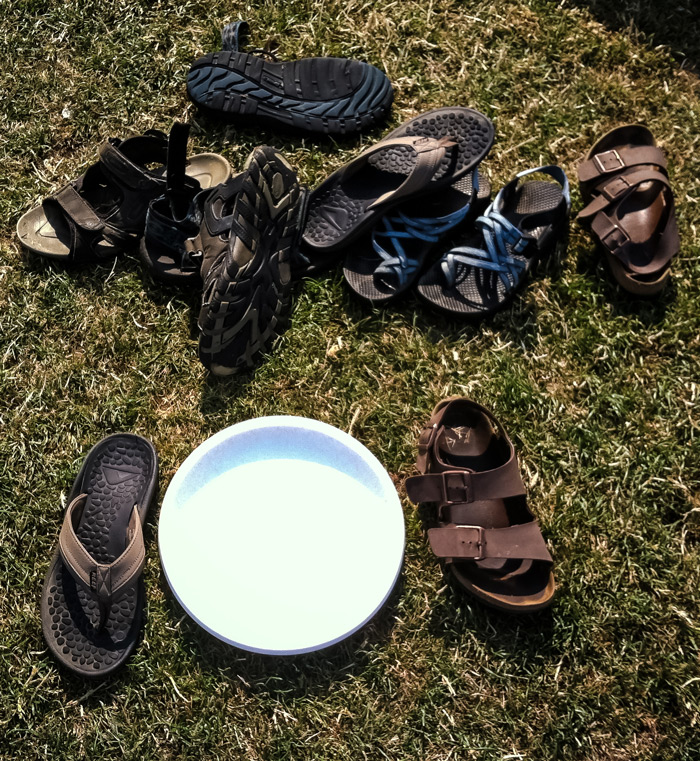 Even in organized tournaments, an ultimate frisbee game generally features no referee or scorekeeper. Teams call fouls on themselves and keep track of the score using a spare frisbee and a jumble of shoes; after each goal, a shoe is moved to one side or the other of the frisbee, depending on which team made the score. When this picture was taken early in a game at the 26th annual Potlatch tournament over the July 4th weekend in Redmond, Washington, the score was tied, one up.
Even in organized tournaments, an ultimate frisbee game generally features no referee or scorekeeper. Teams call fouls on themselves and keep track of the score using a spare frisbee and a jumble of shoes; after each goal, a shoe is moved to one side or the other of the frisbee, depending on which team made the score. When this picture was taken early in a game at the 26th annual Potlatch tournament over the July 4th weekend in Redmond, Washington, the score was tied, one up.
Despite what seems obvious from this picture, ultimate frisbee players don't usually compete barefoot. Out on the field, they wear soccer cleats or running shoes.
And if the goal scoring should happen to outpace the number of available scorekeeping shoes, one shoe can be turned sideways to stand in for five vertical shoes, much as tick marks are slashed sideways in bundles of five.
The Potlatch is among the largest tournaments in the ultimate frisbee world, with teams coming to compete from as far away as Korea, Alaska, and the east coast of North America. In the game being scored above, the Garden Gnomes of Olympia, Washington, eventually fell to a team from San Francisco; the Gnomes have changed their name to O'School and signed up to try again at the 2016 Potlatch.
Jun 10, 2016
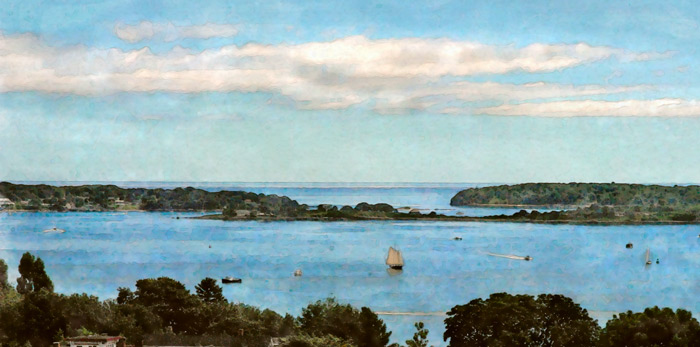 A nice day on Casco Bay, as seen from the Portland Observatory, the city's old maritime signal tower atop Munjoy Hill.
A nice day on Casco Bay, as seen from the Portland Observatory, the city's old maritime signal tower atop Munjoy Hill.
Jun 14, 2016
 The prairie lands around the southern end of Puget Sound were created by ice and sustained by fire.
The prairie lands around the southern end of Puget Sound were created by ice and sustained by fire.
Retreating glaciers some ten thousand years ago left behind vast stretches of land scraped bare of trees, initially supporting only grasses and other low-lying scrub, in a climate generally so humid that grassland would normally yield to forest. Much of this post-glacial prairieland did revert to forest, but by burning off the old growth every spring, Native peoples prevented tree seedlings from taking root and thus maintained many thousands of acres as grassland for grazing their horses and other livestock.
However, the prairies of Western Washington were the first land grabbed by invading Europeans; lacking tree cover, they were ready-made for cropland and pasture. Farms and cities grew. The ancient practice of annual burns was abandoned, and big trees were soon thriving.
Only a few tiny remnants of these prairies remain, grassy islands in a sea of trees, and they are ecologically degraded now to varying extents. Much of the remaining acreage is entrusted to the Center for Natural Lands Management, a nonprofit that attempts to restore and preserve the South Sound prairies. Annual burning regimes have been reinstated.
Above is a bit of the grass in Glacial Heritage Preserve, a prairie in Thurston County, Washington, that is open to the public only on volunteer work days.
Jan 16, 2018
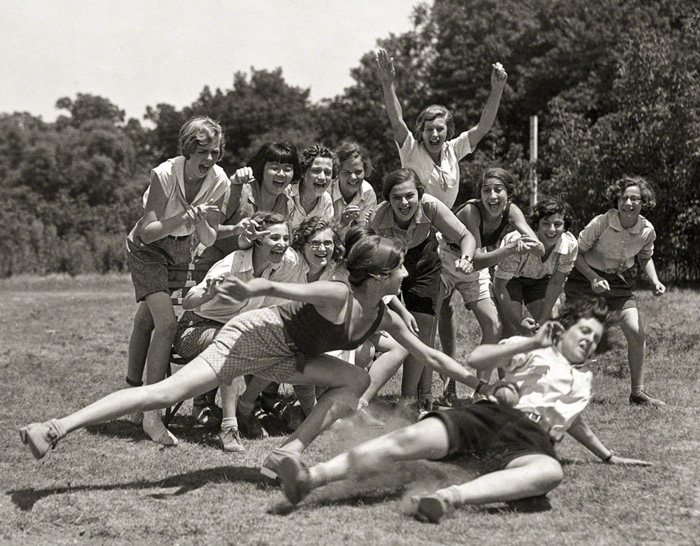 Posing for an action shot in a softball game at a Y camp in Plano, Illinois, 1930.
Posing for an action shot in a softball game at a Y camp in Plano, Illinois, 1930.